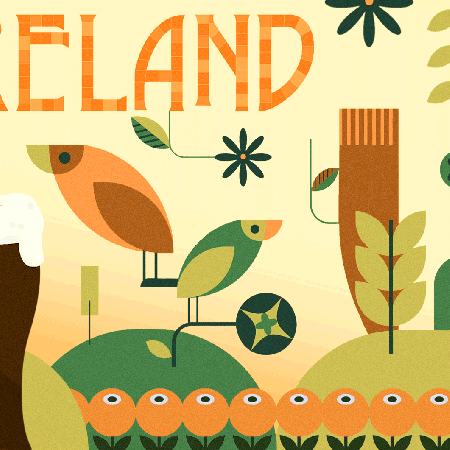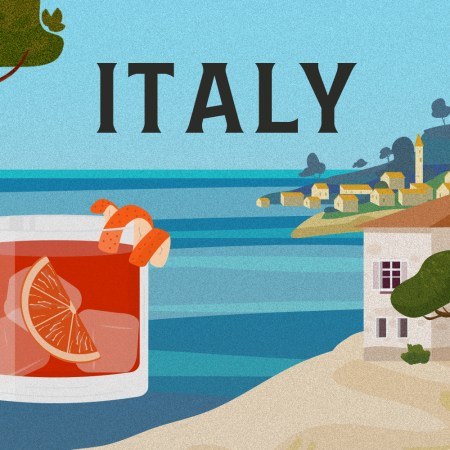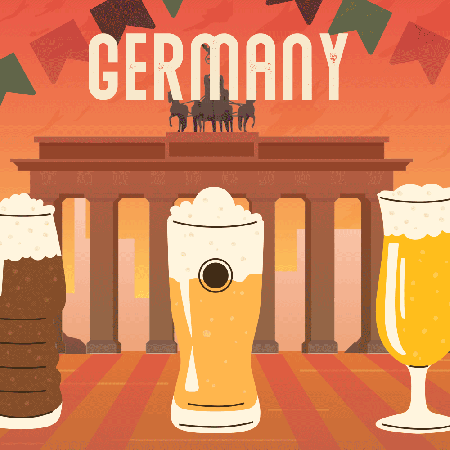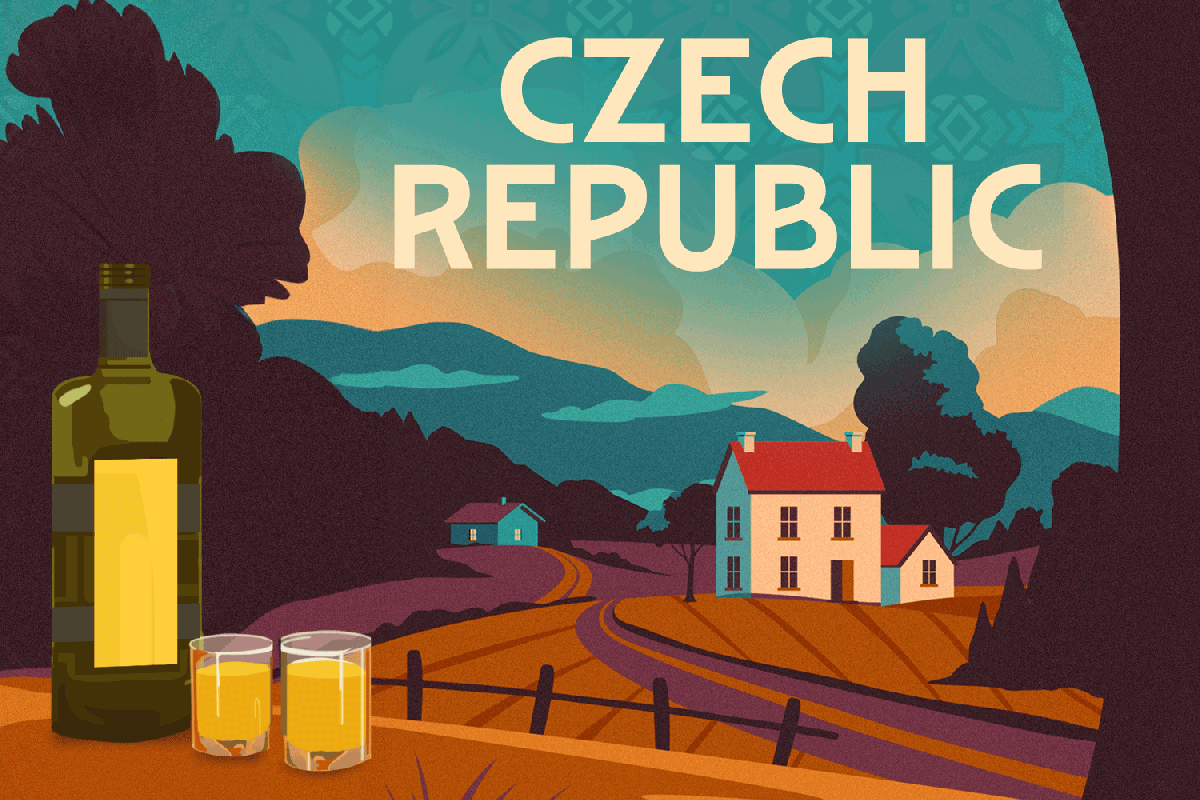
To celebrate the incredible drinking cultures of Europe, we dove deep into 10 different countries to get to know a little more about what’s in their glasses and how it got there in the first place. Click here to see them all.
Editor’s note: The Czech Republic officially changed its name to Czechia in 2016, but both names are still used, depending on the situation. We have used Czech Republic in the title of this article but will use Czechia throughout the rest of the piece.
To say the Czechs love their beer is an understatement. In fact, Czechia has ranked as the world’s top consumer for 30 years in a row in one annual report, totaling 188.5 liters per person, per year. That’s far ahead of second place Austria, at 101.2 liters, and more than three times the 60.9 liters the United States consumes. One good place to understand why is in the city of Pilsen, where brewer Josef Groll unveiled the pilsner beer on Oct. 5, 1842. This revolution not only put Pilsen on the map but made the beer style the most popular in the world.
That said, wine wins more of the spotlight the further east you go into the Moravia region, which covers the eastern half of the country. It’s been producing wine since the ninth century and devotes around 40,000 acres to producing the grapes for it. Some of these are now going to Autentická wines. “Czechs have really created a space for themselves with natural wines in recent years,” says Elizabeth Zahradnicek-Haas, Editor-in-Chief of Expats.cz, an English news site for the country’s international community. “These bottles are produced in organic mode without chemical sprays and fertilizers that destroy the soil of the vineyard.”
The beer-wine divide does reflect key cultural differences between the Bohemian and Moravian Czechs, but all share the same spirits — Becherovka, an herbal digestif, and Slivovice, a plum brandy popular in much of Central and Eastern Europe. Both come out in force for celebrations and events and are taken straight or in cocktails.
That said, it’s also important to note changes in the drinking culture among younger Czechs, who are ever more trending toward low and non-alcoholic options. This reflects both a growing appreciation of the health impacts of alcohol consumption and national efforts to curtail it . “As weird as this may sound, I believe the wind is drifting on the whole, ‘We are proud beer drinkers,’” says Janek Rubes of Honest Guide, a YouTube channel offering the inside scoop on Czech life and culture.
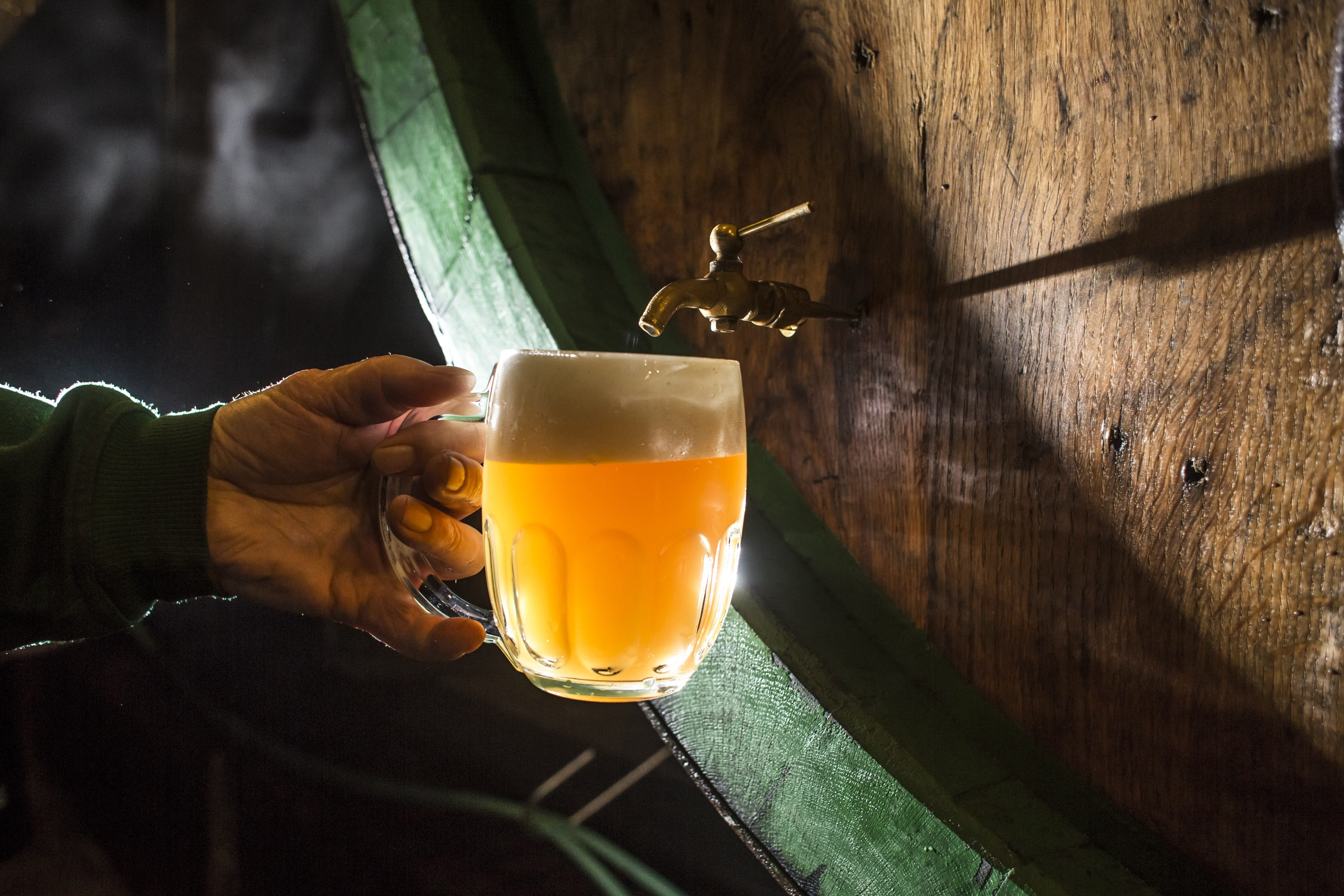

Pilsner Beer
A number of beer styles are close to the Czech heart, but Pilsner still ranks highest, being a Czech invention. This hoppy lager took the world by storm upon its release by Pilsner Urquell in 1842 and remains the most popular beer style globally. This goes beyond the wildest dreams of the Pilsen citizens who brought in Groll to address the lackluster beers produced at the local brewery. Instead of refining the old, he introduced the new, most notably using a bottom fermenting yeast that launched a lager revolution in the world of ales.
Becherovka
This herbal liqueur, made from a famously secret recipe of “20 herbs and spices,” came into the world in 1805, thanks to founder Josef Vitus Becher. The drink tastes of ginger, clove, cinnamon and even Christmas trees. As it aids digestion, Becherovka is often served chilled after meals, although it makes appearances in cocktails like the Beton, which mixes it with tonic and lime.
Slivovice
This plum brandy comes in many guises and spellings throughout Central and Eastern Europe, where it was invented in the Middle Ages. The Czech version is particularly associated with rural Moravia in the Wallachian region, where it’s considered a national drink. The main debate is whether to serve it cold to go down better or warm to taste better.
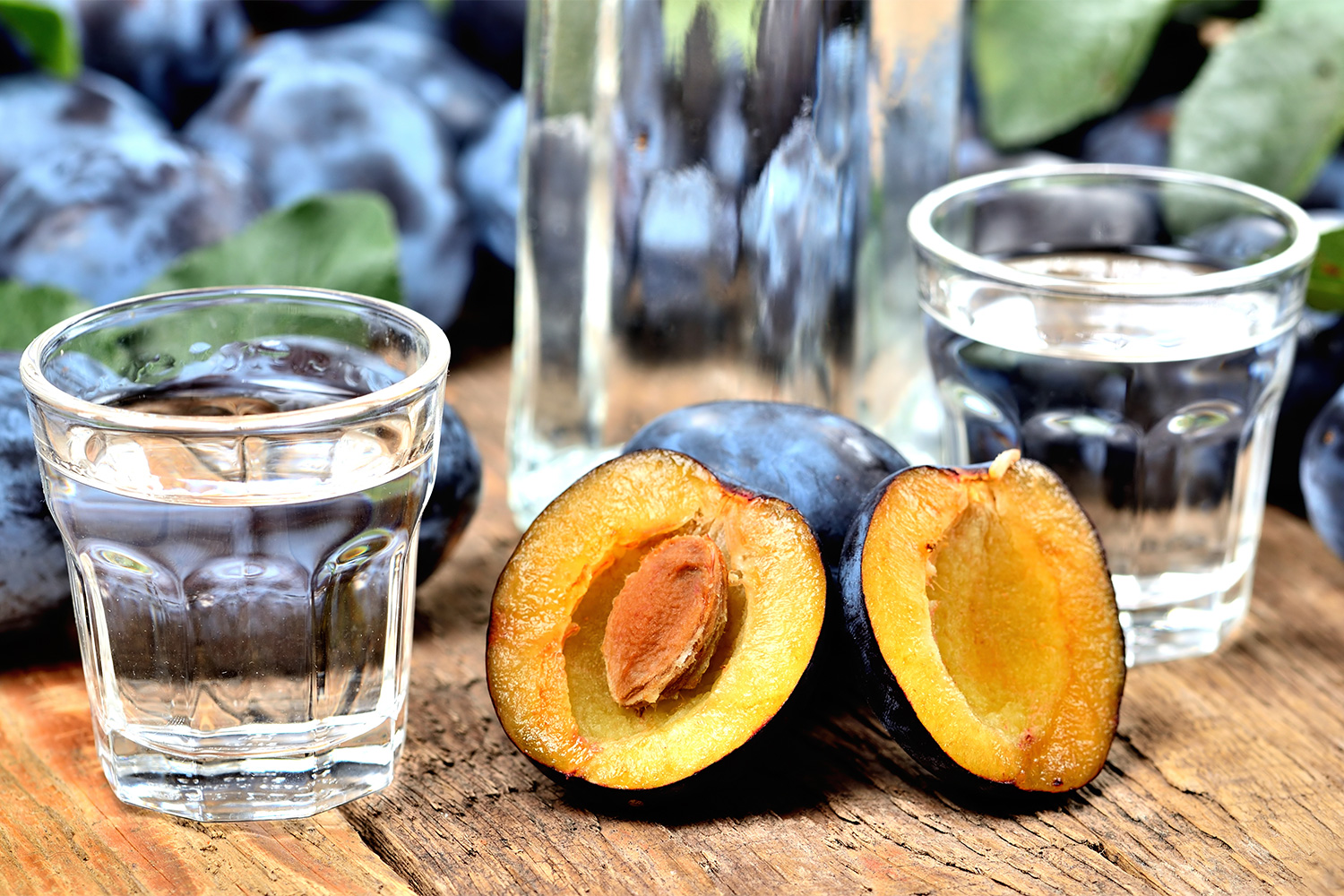
White Wine
While wine is produced all over the country, it’s most associated with Moravia, especially its southern regions, where 96% of Czech wines are made. Whites tend to stand out most, especially Müller-Thurgau, riesling, pinot blanc, chardonnay, grüner veltliner and moravian muscat. A particularly delightful version of Czech wine is burčák , or young wine, that arrives mid-ferment to farmers markets in August. It’s essentially a sweet grape soda with a kick. The carbonation still happening in the bottle makes it dangerous to any clothes you’re wearing or bag you’re carrying it in, as explosions are possible.

This is Czechia’s biggest annual beer festival and features the handiwork of more than 50 breweries in a boisterous, Oktoberfest-like atmosphere — sloshing liter-sized mugs included. The festival comes with all the fixings, including nibbles galore by Czech chefs, butchers and bakers, as well as workshops, lectures, tasting sessions and musical performances.
This beer festival in Pilsen puts the focus on microbrews, inviting brewers from around the world to serve specialty and hard-to-find beer styles during three days. In fact, it takes place at microbrewery Purkmistr, who makes unpasteurized and unfiltered beers from exclusively Czech ingredients. The brewery also hosts a beer spa for full and literal immersion.
This hops and beer festival takes place in the prime hops country of Western Bohemia. Indeed, the host village of Žatec and the surrounding hop fields are a UNSECO World Heritage Site. The thousands of beer lovers who arrive each September for the two-day festival fill the town square and transform the entire village of 20,000 into one large party accompanied by seven stages of live entertainment.
Czech wine is not the only focus at the annual historical festival in this south Moravian town. The three-day event culminates in a medieval cosplay parade that marks the 1,327 visit of the Czech king and queen to Znojmo. Add to this jousting tournaments, a period military camp, historic marketplace with demonstrations of crafts and the “punishment” of rogue winemakers
Pálava Wine Harvest Festival
Yet another Czech King, Wenceslas IV, processes through this Moravian town, Mikulov. This time, it’s a tribute to his jailbreak from a Vienna prison in 1403 by knights from the area. He’ll also look more handsome than ever after barrels of local red, white or rosé are poured and sipped alongside multiple stages of live music, food stalls and a craft market.

Nationally, this is Czechia’s largest wine festival. Named for the patron saint of wine, the November event is essentially the coming out party for the year’s new vin. By tradition, that wine must be quaffed alongside a roasted goose and sweet pastries. Festivities take place throughout the country and often accompany lantern processions.
Slivovitz gets the spotlight at this annual festival on the premises of the spirit’s most famous producer, Rudolf Jelínek, in Vizovice. Chase it down with musical performances and plum dumplings, which are also featured in the annual eating competition.


Olomoucké Tvarůžky
This famously stinky cheese from the Olomouc region is not for everyone, who may struggle to fight past its garlicky stink-foot aroma to get to the better tasting flavor inside the semi-soft, sticky yellow rings. But it pairs great with beer, as its regular appearance on pub menus — often alongside onions or pickled vegetables — shows.
Nakládaný Hermelín
Another cheesy mainstay, this bar snack takes the camembert-like Hermelin cheese and marinates it in oil with onions, garlic, chili, and herbs and spices like bay leaves, peppercorns and allspice berries. Some versions sandwich onions and peppers between slices.
škvarková Pomazánka
The Czech affection for pork finds completion in this crackling spread. Recipes vary, but all start with pork crackling and lard and blend it with complementing ingredients like mustard, salt, onion, pickles and other herbs and spices. It’s then spread on bread or crackers.
Utopenec
Translated as the “drowned man,” this pub food pickles thick, fatty spekacek sausages with onions, pickles, chili paste and an assortment of familiar herbs and spices. It’s typically served with bread alongside Czech beers.

As the origin of the Pilsner beer style, this nearly 182-year-old brewery has become a pilgrimage for beer lovers around the world. It’s also a dynamic window into Czech history and culture, with a fantastic tour that tells those stories. This includes descending into the five miles of medieval tunnels where the beer was once stored. Here, you can also try unfiltered and unpasteurized Pilsner Urquell poured straight from an oak barrel, which may be the best beer of your life.
U Fleků
Prague has no shortage of historical drinking halls dating back hundreds of years, but this one is the granddaddy. For more than 500 years, this brewery has been producing beer continuously and serves pints in eight halls and a garden. The beer selection is as old school as they come — just dark and light. Find equal pedigree and pints at Strahov Monastery Brewery and Brevnov Brewery, both with centuries of brewing experience.
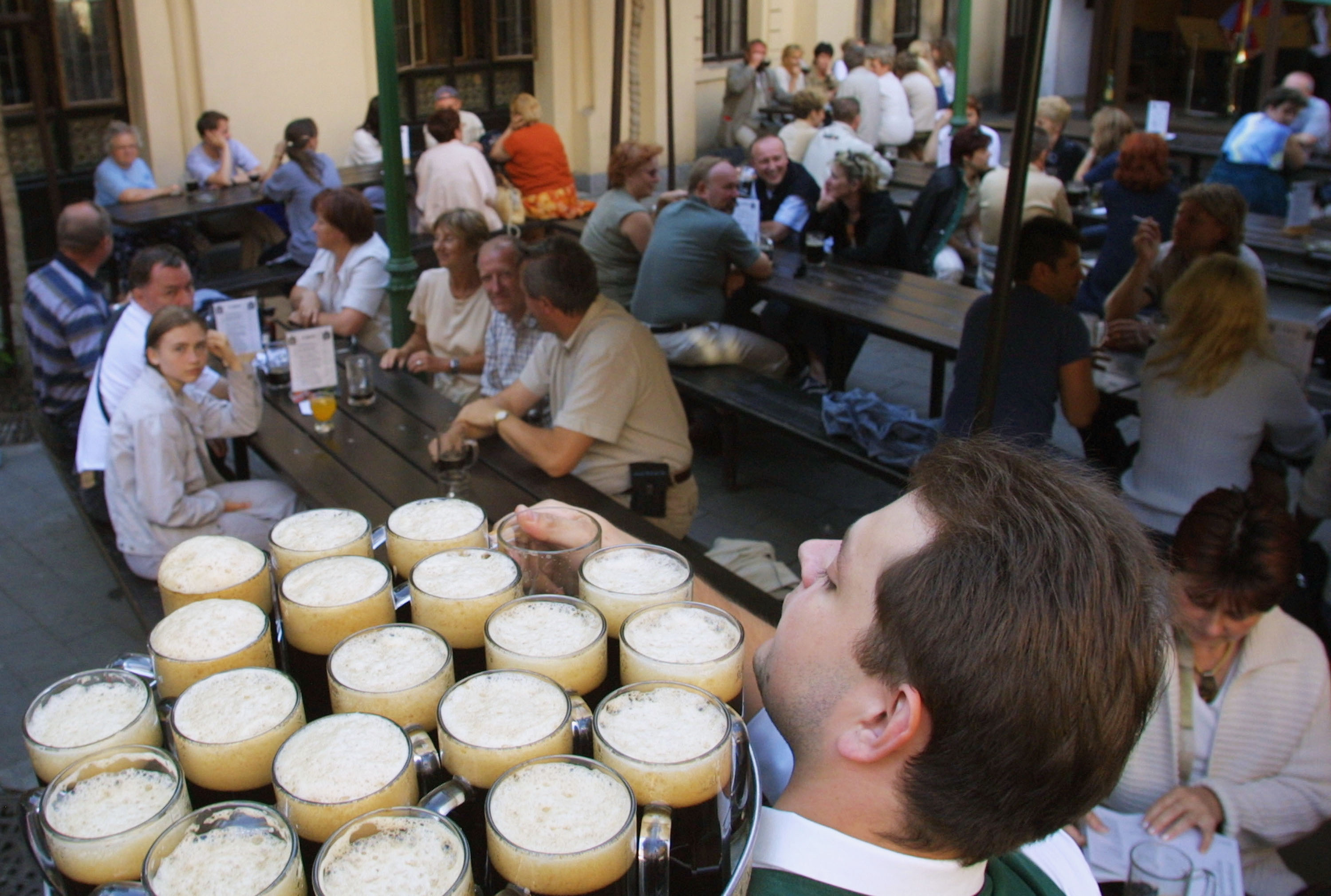
Letna Beer Garden
Spread across a section of Letna Park in Prague, this outdoor beer garden comes with spectacular views of the Old Town, spread out in panorama below. It’s also a popular meeting place for friends and family to catch up, drink the Czech standards and gush at the glory of the city.
This cocktail bar, or “the Bar Which Doesn’t Exist,” in Czechia’s second largest city, Brno, has a reputation for mixing some of the best drinks in the country. That’s partly because of the New York City vibe, Chesterfield sofas, jazzy ambiance and hundreds of bottles stacked on backlit shelves. They might get some competition, though, from nearby Super Panda, which serves cocktails in a circus ring inspired by far-east Asia. And both are good spots for hopping on the mocktail train. “People lean toward less potent creations that rely on fresh ingredients,” Haas says. “They are less driven by alcohol content and more by presentation, service and fewer headaches the morning after!”

Order by degrees: Czech beer follows its own tune when it comes to strength. Instead of measuring by ABV, Czechs use a system of degrees based on the Plato scale that measures the fermentable content of the wort. The higher the degree, the higher the alcohol. They range between 10 and 18 degrees and the lower the number, the lighter beer.
Embrace the foam: For Czechs, a beer is incomplete without a full foamy head — so much so that they order beer according to foam level. The most common are Hladinka for 20 to 25% foam, Šnyt for 50/50 and Mlíko for a full glass of foam. Special side-pull taps also make sure the foam is dense and creamy, making it important to imbibe before it dissolves.
Look into the eyes: In Czechia, any toast comes with a meeting of the eyes, and glances in other directions may earn a reprimand and a two-finger gesture directing your eyes to theirs. Finally, after toasting na zdraví, tap the glass on the table before drinking.
Don’t cross the streams: When toasting in a group, take care to not cross arms with anyone else. If you do, that’s seven years of bad sex.
Thumb your drink when ordering: As in many places in Europe, the thumb is the primary digit to indicate one, not the index finger as in the United States. The index finger extends with the thumb when ordering two, and three and four proceed from there.

While cocktails still represent a relatively new frontier in Czech drinking culture, the Czech Bartenders Association is working hard to change the game, with cocktail recipes like these.
Beton
The official Czech national cocktail essentially recreates a Gin and Tonic with Becherovka.
2 oz. Becherovka
4 oz. tonic
.5 oz. freshly-squeezed lemon juice (optional)
Lemon slice, for garish
Build the drink in a Collins glass with ice. Garnish with a lemon slice.
Milan Kundera’s Library
This drink, invented by Whiskáč bar in Brno, pays tribute to the famous Czech writer who spent a significant part of his life in exile in France. It combines Czech and French ingredients.
1.5 oz. Gold Cock Peated Whisky
1.5 oz. apricot liqueur
.5 oz. verjus
1 barspoon Yellow Chartreuse
1 barspoon Joseph Cartron Apricot Brandy
Add all ingredients to a cocktail shaker with ice. Shake and strain into a coupe glass.
Tradition
This cocktail, created by Marek Šimůnek of L’Fleur Bar in Prague, won the 2024 Rudolf Jelínek Cup.
1.5 oz. pear brandy
.5 oz. Vermouth Sedmero Zralé
Pear soda, to top
Pear slice, to garnish
Add the brandy and vermouth to a mixing glass with ice. Stir and strain into a rocks glass over a big cube. Top with pear soda and garnish with a pear slice.
Join America's Fastest Growing Spirits Newsletter THE SPILL. Unlock all the reviews, recipes and revelry — and get 15% off award-winning La Tierra de Acre Mezcal.
